Jason Silvestri On Talent Acquisition to the Final Offer Lifecycle Process
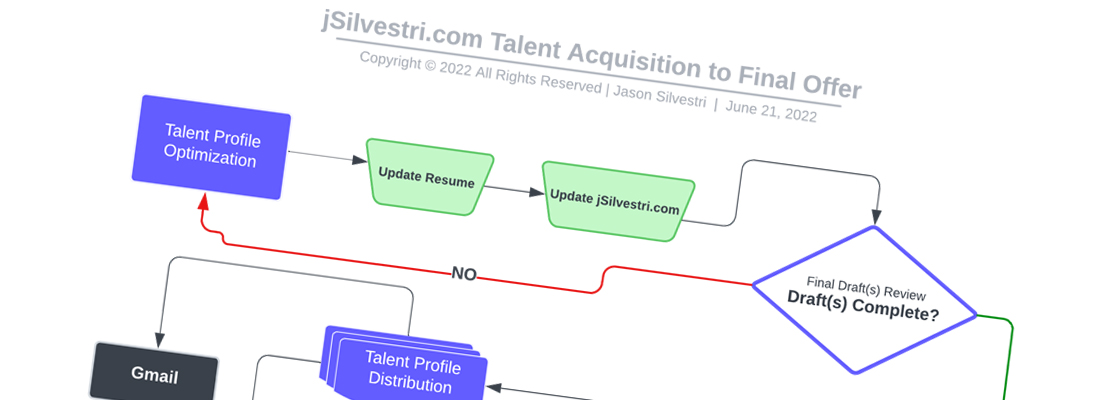
I don't think people (in business) give recruiters and talent acquisition specialists enough credit, with respects to finding the right talent (Candidate) for the right client (Employer). Yes, there are plenty of firms that muddy up the water, but some have it down, especially when working with me. This post is to describe how!
LGLP Derivative: Talent Acquisition to Final Offer Lifecycle: Blog Post: Table of Contents
- Primary Overview
-
My Custom LGLP (Lead Generation Lifecycle Process)
- The Workflow State Rules of Engagement
- Talent Profile Optimization
- Update Resume
- Update jSilvestri.com
- Final Draft Review
- Publish All Updates
- Talent Profile Distribution
- Work Offer Solicitation Review
- Share: Talent Profile
- Future Relevant Roles
- Share: Talent Profile
- Rate Confirmation
- Agree: Decision Gate
- Right to Represent
- Agree: Decision Gate
- ⚠️ Client Delay ⚠️ Rare Bottleneck Workflow States
- Client Delay: Candidate Talent Review
- Client Delay: Schedule Interview
- Accept Interview Schedule
- Client Delay: Satisfied with Candidate Interview?
- Client Delay: Final Offer Draft
- Accept Final Offer
- End: Lifecycle
- In Closing
- Updates Since Article Creation
Primary Overview
I truly don't believe people in business give recruiters and talent acquisition specialists enough credit, with respects to finding the right talent (Candidate) for the right client (Employer). In fact, I don't think people truly understand how much of the process must be reenacted for each potential recruitment.
Yes, there are recruiters and talent acquisition specialists that muddy up the water. However, there are some recruiters and talent acquisition specialists that have it down, especially when they are collaborating with me. Joey Francis, a Technical Staffing Specialist with a staffing firm, called, "new·cruit" is a good example of a professional that has it down.
For example, so many firms will blast you with roles within 2-24 hours, from the moment you tell them what you are looking for, no matter the actual relevancy. This is bad for business; it is bad for the candidate and the employer. The best thing any recruiting firm or talent acquisition specialist can do is take the time to ensure the pairing is accurate as possible. For example, Joe will listen to what I am looking for, and will not bother me again until he has an exact set of matches. It could be hours, days or even weeks before he reaches out. In the years I have collaborated with him, he has never given-in to temptation, not once, and just sent job descriptions that may or may not be relevant.
Determining whether the roles a staffing company sends you are relevant or not is just one step (one workflow state) of a multi-step, lifecycle process, of taking a talent acquisition to final offer. Moreover, using recruiters and talent acquisition specialists is a customary practice in Tech. I take working with recruiting firms & talent acquisition specialists very seriously, and the process in-which I use to manage each work offer solicitation.
This post describes my recently created complex, lifecycle process, with various, sophisticated workflow states, each representing real-life action items and steps I perform with each recruiter & talent acquisition specialist I work with, from the moment I am, quote on quote, “On-the-Market”, until I am accepting a “Final Offer Letter” from one of their clients (and/or in rare cases, the potential employer, directly).
I invented this complex, lifecycle, called, “Talent Acquisition to Final Offer Lifecycle Process” which is a derivative of my custom LGLP (Lead Generation Lifecycle Process), to show recruiters, talent acquisition specialists, and even potential employers just how serious I am about this process, and the importance of adopting a similar process. I am also thankful I was able to create this post to reflect on the lifecycle and its workflow states. Luckily, my much-needed time off allowed me to spend time with family, work on some projects that are important to me, like develop jSilvestri.com BETA v 2024 (the web & mobile app you are using now) to showcase my latest skills, portfolio, new ideas, and most importantly, this post, which I have been wanting to create for months now. In fact, it would not have been possible otherwise. So, please, enjoy, and I hope it helps you!
My Custom LGLP (Lead Generation Lifecycle Process)
Product Lifecycle Management (PLM) is the process of managing a Product through it's entire Lifecycle, from conception to Time-to-Market. I started using PLM ideology & design best practices back in the late 90s with a company called, Life Cycle Solutions, Inc. I was barely out of my teens. Crazy to think about. Anyway, Life Cycle Solutions, Inc. were pioneers in the PDM (Product Data Management) & PLM (Product Lifecycle Management) industry sectors. Well before Microsoft’s flavor of Lifecycle Processes & Workflow State Management, it was companies like Life Cycle Solutions, Inc., and the PLM & PDM Boom.
More Importantly, however, the “Talent Acquisition to Final Offer Lifecycle Process” - a derivative of my custom LGLP (Lead Generation Lifecycle Process) - was made up of a series of complex, but manageable, life cycle phases, decision gates and workflow states, that seamlessly walk us through an entire instance of the life cycle. I hope the effort I put into this post will aid you in the better management of work offers solicitated to you! Figure 1 below, shows the full “Talent Acquisition to Final Offer Lifecycle Process” in its entirety.
Figure 1: Complete Talent Acquisition to Final Offer Lifecycle Process
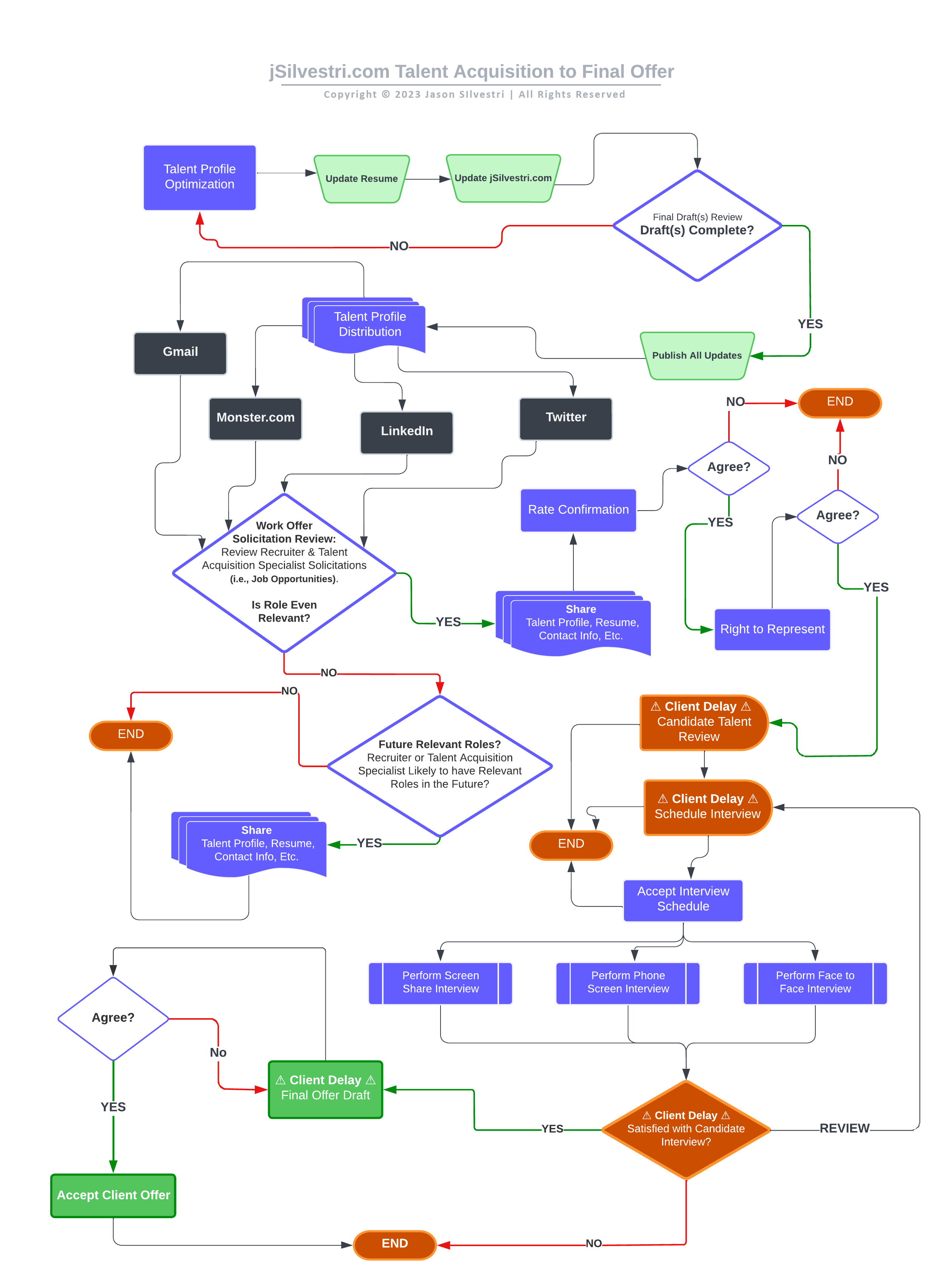
The LGLP consists of several Workflow States, all of which are real-life states of the process (e.g., current status with each potential role) between me, the recruiting firms & talent acquisition specialists, with each workflow state measuring data points from the day I'm "on-the-market", until the day I accept a Client Offer. A new LGLP instance is initiated every time I start dialog with the firm that sent a solicitation.
To perform a step-by-step, deep-dive into the definitions of each workflow state that make up the Talent Acquisition to Final Offer Lifecycle Process (a derivative of my custom LGLP) mentioned above, feel free to hit the Get Started button below.
Get STARTED
The Workflow State Rules of Engagement
To avoid as much confusion as possible while you follow the step-by-step-like Workflow States of the “Talent Acquisition to Final Offer Lifecycle Process” below, it is important to understand that the Workflow States, and their definitions, are presented in the order in-which produce the path of least resistance; that is, concluding the current instance of the “Talent Acquisition to Final Offer Lifecycle Process” itself, in the most efficient way possible.
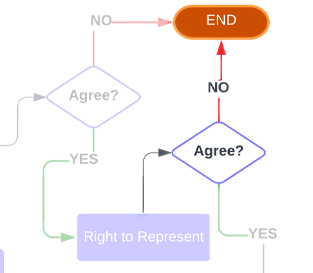 For example, in the case of Decision Gate Workflow States (e.g., Conditional Workflow States, such as, “Agree” which are Decision Gate Workflow States that have two or more directions an end user can go, based on the end user’s final decision). These special Workflow States often produce different paths within the lifecycle, such as a “Yes” or “No” directionals, that send the end user down a different part of the lifecycle.
For example, in the case of Decision Gate Workflow States (e.g., Conditional Workflow States, such as, “Agree” which are Decision Gate Workflow States that have two or more directions an end user can go, based on the end user’s final decision). These special Workflow States often produce different paths within the lifecycle, such as a “Yes” or “No” directionals, that send the end user down a different part of the lifecycle.
Each direction (or re-direction) within the lifecycle may have similar Workflow States, but the definition for the “No” direction, may come before a “Yes” definition, in any part of the documentation, if the shortest path to concluding the lifecycle presents itself, hence, the path to least resistance.
Ultimately, though, each, and every, Workflow State, along with its possible directionals/paths try best to quote on quote, “End” this instance of the “Talent Acquisition to Final Offer Lifecycle Process” as soon as possible. In fact, we even have a special, “End: Lifecycle” Workflow State that all paths lead to, one way or another. The main point being, having the “No” directionals/paths and their definitions, come before the “Yes” directionals/paths and its definitions, as well as everything in between, will sometimes go against common grammar practices and/or common patterns we recognize in everyday life as something different. This may become confusing at times if you are not carefully following the lifecycle and its step-by-step-like Workflow States.
In the end, the goal is to “End” this instance of the “Talent Acquisition to Final Offer Lifecycle Process” as soon as possible.
Until then, let”s start with the first workflow state in line, by immediately starting at the “Talent Profile Optimization” Workflow State.
Talent Profile Optimization ∴ Workflow State
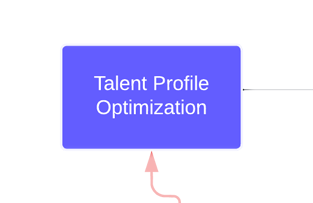 The very first step I take when looking for new full-time roles and/or contracts is updating my talent profile, through a process I call, “Talent Profile Optimization”.
This includes, but not limited to, my resume; my latest skills; profile information across social media platforms, such as LinkedIn, Monster.com & Twitter; the updating of my latest version of the www.jsilvestri.com application (a full body responsive designed application, universally available to most smart phones, tablets & desktop computers), to best fit the job opportunities I want to acquire at the time of optimization.
The very first step I take when looking for new full-time roles and/or contracts is updating my talent profile, through a process I call, “Talent Profile Optimization”.
This includes, but not limited to, my resume; my latest skills; profile information across social media platforms, such as LinkedIn, Monster.com & Twitter; the updating of my latest version of the www.jsilvestri.com application (a full body responsive designed application, universally available to most smart phones, tablets & desktop computers), to best fit the job opportunities I want to acquire at the time of optimization.
For the record, as of , my talent profile is up-to-date (i.e., my entire talent profile, resume, contact information, and/or any information that can best position me in front of solicitation stakeholder clients, further explained below).
To obtain up-to-date versions of my Talent Profile information described here, please visit the section of my web-mobile application, entitled, “ Candidate Common Occupation Details ” for more details.
Once we have established the areas of optimization (i.e., resumes, social media outlets, job boards & you get the picture) we will target, we are immediately sent forward to the “Update Resume” Workflow State.
Update Resume ∴ Workflow State
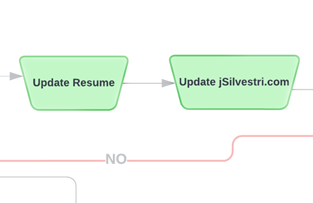 Regardless of latest talent profile information I update across social media platforms, job search boards, and/or other outlets, I must update my resume, first. In other words, my resume needs to be the final draft before changes are shared anywhere else.
Regardless of latest talent profile information I update across social media platforms, job search boards, and/or other outlets, I must update my resume, first. In other words, my resume needs to be the final draft before changes are shared anywhere else.
Once all changes have been committed, we will target, we are then sent forward to the “Update jSilvestri.com” Workflow State.
Update jSilvestri.com ∴ Workflow State
 Equally important, my latest version of www.jsilvestri.com must be updated and be considered the final draft as well. This includes latest talent profile updates, ensuring my latest resume is available for download, in addition to updating my Candidate Common Occupation Details section of my application, and/or really any other update in the application that supports my latest talent profile updates.
Equally important, my latest version of www.jsilvestri.com must be updated and be considered the final draft as well. This includes latest talent profile updates, ensuring my latest resume is available for download, in addition to updating my Candidate Common Occupation Details section of my application, and/or really any other update in the application that supports my latest talent profile updates.
Once the changes are made to my application, we are sent forward to the “Final Draft Review” Conditional Workflow State (sometimes called a phase gate or decision gate).
The “Final Draft Review” Decision Gate ∴ Workflow State
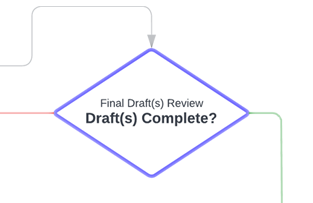 Once ALL talent profile information is updated across all social media platforms, my www.jsilvestri.com web application, job boards such as Monster.com, LinkedIn, etc., we ensure all information is reviewed across the board as the final draft. We check all updates and decide whether the talent profile updates reviewed have been considered complete or still required revision.
Once ALL talent profile information is updated across all social media platforms, my www.jsilvestri.com web application, job boards such as Monster.com, LinkedIn, etc., we ensure all information is reviewed across the board as the final draft. We check all updates and decide whether the talent profile updates reviewed have been considered complete or still required revision.
Are Drafts Complete?
No
There was a problem of some kind; some form of talent profile information was flagged as wrong in one of the social media or job board platform posts, and/or there could have been a bug found in my application during Draft Review. In fact, anything can happen, from something big, to something as simple as a typo found somewhere.
In the case of No, we are immediately sent back to the “Talent Profile Optimization” Workflow State.

Yes
ALL talent profile information is good to go, across all social media platforms & job boards, my resume is all set with changes, my web application has all changes made in Visual Studio, and everything is ready for publishing.
Finally, we are sent forward to the “Publish All Updates” Workflow State.
Publish All Updates ∴ Workflow State
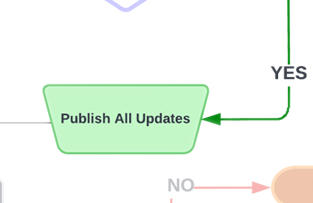 Once all talent profile information has been updated across my web application, social media platforms & job boards, I check in (commit) all updates to my Microsoft DevOps based Git repository.
Once all talent profile information has been updated across my web application, social media platforms & job boards, I check in (commit) all updates to my Microsoft DevOps based Git repository.
Then, I perform a sub-Workflow (not shown in this documentation), step-by-step, publishing procedure to my Azure Cloud servers which releases a final candidate version of the application, available to the public via www.jsilvestri.com.
Finally, once all changes have been committed, we are sent forward to the “Talent Profile Distribution” Workflow State.
Talent Profile Distribution ∴ Workflow State
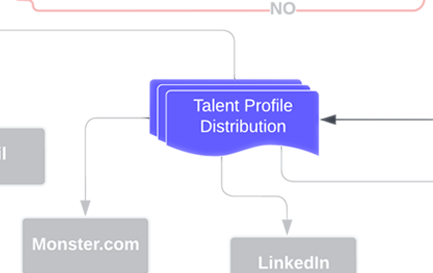 Once all relative talent profile information has been released to my application and other platforms, I begin to distribute basic copy written content posts (that I curate), in the form of email sending and receiving, posts to respective social media platforms and job boards, almost all of which, were designed to showcase my most recent technology advancements, new skills acquired, and/or any other job related information that will help employers better understand my current occupation details as a full-time employee or contractor.
Once all relative talent profile information has been released to my application and other platforms, I begin to distribute basic copy written content posts (that I curate), in the form of email sending and receiving, posts to respective social media platforms and job boards, almost all of which, were designed to showcase my most recent technology advancements, new skills acquired, and/or any other job related information that will help employers better understand my current occupation details as a full-time employee or contractor.
Like many people these days, I use several different social media platforms of today to streamline my message in ways we could not even think of just a decade or so ago.
Conversely, I use only a handful of specific social media platforms, in combination with a select set of job boards and tools, when performing the actual distribution part of my talent profile.
The social media platforms, job boards & tools I use for Talent Profile Distribution are as follows:
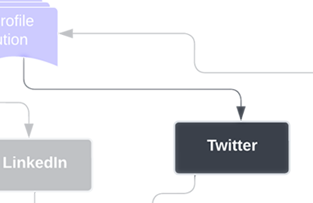
I am not a huge fan of Twitter these days, even though I have almost 40,000 followers. In fact, I had over 60,000 followers, but you will lose followers if you stop using and/or dramatically reduce your time on platforms like Twitter.
Still, I use Twitter from-time-to-time to post recent blog posts that relate to my current narrative, communicate with some recruiters and talent acquisition specialists via public tweets and DMs, report updates and/or bugs via my web app, etc.
Monster
As great as the social media platforms are today, one of the most effective things most job hunters should do is post their profile to job boards. As far as job boards go, I use Monster.com almost exclusively. Why?
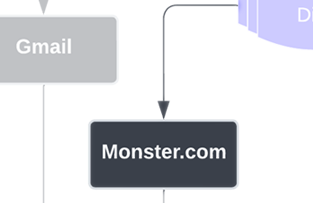 Well, being a Lead Sr. Web Software Engineer, I understand that Monster.com - like many companies today - has data that is valuable to other vendors; data the vendors want to data-mine. So, Monster.com has gone the way of selling your talent profile to other job boards.
Well, being a Lead Sr. Web Software Engineer, I understand that Monster.com - like many companies today - has data that is valuable to other vendors; data the vendors want to data-mine. So, Monster.com has gone the way of selling your talent profile to other job boards.
The most common way vendors can provide/sell data is by having an API developed so other job boards, other 3rd party customers, and/or other vendors can pull talent profiles - in bulk - and make it their own so-to-speak.
All the big players of today, such as, Dice & Indeed, post my profile in their results, about every time I make any real updates to my Monster.com profile, even though I have never created an account with either service provider.
Another important social media platform that matters, especially since we are talking about job opportunities here, is having your talent profile on LinkedIn.
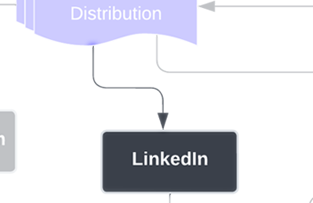 I have always liked LinkedIn’s effort, but there are some pros and cons. Yeah, I am part of the 500+ club, I do talk to recruitment and talent specialist leads there to a degree (even some direct employers). Moreover, LinkedIn is certainly a social media platform you want to take advantage of when you are on-the-market.
I have always liked LinkedIn’s effort, but there are some pros and cons. Yeah, I am part of the 500+ club, I do talk to recruitment and talent specialist leads there to a degree (even some direct employers). Moreover, LinkedIn is certainly a social media platform you want to take advantage of when you are on-the-market.
Still, there has always been an odd vibe with a lot of the users. It is like, people, are more focused on connecting with others for the numbers game, and posting semi-decent posts with cheesy link bait, then they are focused on communicating with the actual candidates and/or potential customers who are knocking at their virtual door. I do not know. It is just weird. Do not get me wrong. You will still see excerpts of this blog post up there. I guess that is the point. It is more about sharing than caring.
It is why LinkedIn is not the biggest player in the collection of social media platforms and job boards I leverage for talent profile distribution.
Gmail
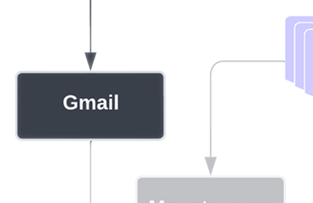
I painfully spend countless hours responding to hundreds of recruiters and talent acquisition specialist each business day via email, funneled to my Gmail, originating from all those API fed job boards, cultivated social media posts, techniques and updates made across my application, and other outlets. In fact, I spend more time in my emails than any other job board and/or social media activity.
Lastly, once we know for certain that all Talent Profile Distribution campaigns have been successful, we are sent forward to the “Work Offer Solicitation” Workflow State.
Work Offer Solicitation Review ∴ Workflow State
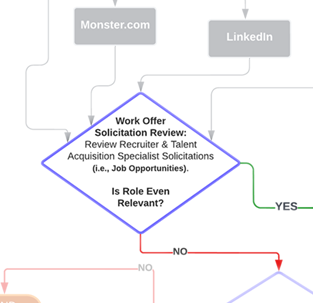 One of the most effective Workflow States in my LGLP (Lead Generation Lifecycle Process) - and where I spend a sizable percentage of my time each day – is reviewing and then reacting to a constant flow of leads (i.e., Work Offer Solicitations). I would be lying if I told you things did not get more complex from here. There are several actions that need to be done in this Workflow State and done so for each Work Offer Solicitations being handled.
One of the most effective Workflow States in my LGLP (Lead Generation Lifecycle Process) - and where I spend a sizable percentage of my time each day – is reviewing and then reacting to a constant flow of leads (i.e., Work Offer Solicitations). I would be lying if I told you things did not get more complex from here. There are several actions that need to be done in this Workflow State and done so for each Work Offer Solicitations being handled.
Work Offer Solicitations are always coming in. I am currently getting them all day and night, phone calls soon follow, and they come from recruiters and talent acquisition specialists all over the World (literally). This is almost always the case, and the only time it wasn’t was during Covid times.
Still, every lead (relevant or not) MUST be managed accordingly. If a recruiter or talent acquisition specialist sends an auto generated message to me, or worse, does so without even spending the time to see if my skills match their client’s job description before wasting my time and their clients,’ I will still respond to the emails... I will hop on those phone calls... I will facilitate…
Another crucial, but tedious step here is re-iterating the same message over and over no matter how tired you get, dozens and dozens of times a day, with respects to your primary objective, what details make up your desired position, etc. There is a positive side to this action, though. I have talked with thousands of recruiting firms and talent acquisition firms throughout the years, and this is no exaggeration. In doing so, I have learned that there are many occupation details that are required by recruiters and talent acquisition specialists to complete your candidate portfolio that they use in pitching you to their clients. In fact, so-much-so, that I created an entirely new section on my web application, entitled, “Candidate Common Occupation Details ”, specifically designed to answer dozens of common questions that relate to things like, salary demands, desired work location, citizenship details, whether or not I am vaccinated & more.
Sending leads (i.e., recruiters and/or talent acquisition specialists, also known as, solicitation stakeholders) to a communal area that holds all of the Candidate Common Occupation Details is a valid and constructive automation, especially when most of the solicitation stakeholders I send here are just trying to get me in their database for the first time anyway.
Now that we are familiar with many of the action items that are required in this Workflow State to move forward, there comes the natural question of relevancy of the work offer solicitation sent to you. There are many factors that determine whether or role is relevant to your skillsets as you know. I have come up with several different relevancy Sub Workflow States.
The primary “Role Relevancy” Sub Workflow States I use in the LGLP are as follows:
Relevant Roles
If the role is relevant, I will go into more details with the individual, such as sharing my talent profile, rate confirmation, or salary compensation, Right to Represent agreements, etc.
Irrelevant Roles
Even if the role is not relevant (i.e., skills do not match, the client mission statement is not consistent with what I am looking for, location is too far, etc.), I will most likely respond unless it was clearly a zero-effort solicitation from the recruiter, talent acquisition specialist or in rare cases the employer directly. I explain the role is not relevant and will ask them to please keep me informed on more relevant roles in the future. I will even share my talent profile if it makes sense to do so.
Irrelevant Roles Due to Location
I am willing to travel part time and/or full-time, to the right location, at the right price, but even then, price only goes so far. I prefer an engaging team, with a positive culture & team members excited to innovate over dollars any day. However, sometimes the location is too far, and that may not always be what I think, personally. It could be the employer worried about commute and/or relocation hardships. So, when location becomes an issue, the role becomes irrelevant due to location.
Somewhat Relevant Roles
Sometimes there is a role that has some skills I have or maybe several skills are relevant, but they do not want enough of the full stack of technologies I offer (e.g., I often prefer roles that require many of my skills across the design-side, client-side, server-side & database-side of applications to keep me stimulated and excited with my role many months to years out). In these cases, it is possible the lead has near future roles available, due to recruiters’ and talent acquisition specialists’ natural tendency to gravitate towards client job descriptions with specific technologies or buzz words they have come to know, and because of this I will still respond, explain the pros and cons I see with the role being solicitated, share my talent profile more likely than not, etc.
Is Role Even Relevant?
No
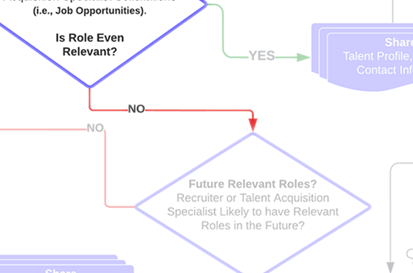
An estimated 85% of all potential leads that come in (work offer solicitations sent to me by recruiters and talent acquisition specialists) are not relevant to my current skills or wants with my next employer.
If the role is clearly not relevant, we are immediately sent forward to the “Is Future Role Relevant?” Decision Gate Conditional Workflow State, where we determine if the lead has provided us with enough reason to collaborate on future roles. Remember, we still want to handle ALL leads, relevant or not.
Yes
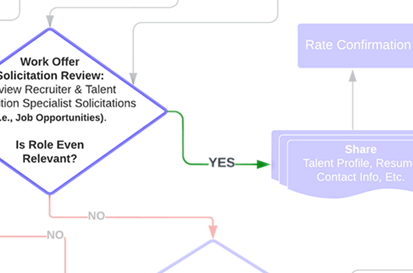 Once I know the role is relevant, I begin to interact more with the solicitation stakeholder.
Once I know the role is relevant, I begin to interact more with the solicitation stakeholder.
Then, we are immediately sent forward to the “Share: Talent Profile” Workflow State, where we share my talent profile (i.e., sharing talent profile, resume, contact information, and/or any information that can best position me in front of solicitation stakeholder’s clients) with the solicitation stakeholder.
⚠️ Please Note:⚠️
The percentages discussed above are relative to the percentage of relevant or irrelevant solicitations sent to me directly, and not the percentage of businesses today seeking my skillsets (e.g., percentage of businesses seeking my skillsets are much higher).
The “Is Future Relevant Roles?” Decision Gate ∴ Workflow State
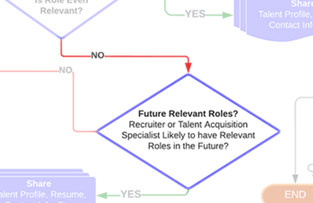 If the Work Offer Solicitation Review Workflow State produced a Work Offer Solicitation that turned out to be NOT relevant, I may or may not follow up with the solicitation stakeholder (i.e., recruiter, talent acquisition specialist and/or in rare cases, the employer directly).
If the Work Offer Solicitation Review Workflow State produced a Work Offer Solicitation that turned out to be NOT relevant, I may or may not follow up with the solicitation stakeholder (i.e., recruiter, talent acquisition specialist and/or in rare cases, the employer directly).
Yes, it is important to process every single work offer solicitation whether the role is relevant or not, as mentioned above in the “Work Offer Solicitation Review” Workflow State. Further explained were the different relevant and irrelevant Sub Workflow States a solicitation stakeholder’s work offer solicitation could be classified as too (i.e., relevant, irrelevant, somewhat relevant, etc.).
And yes, it is possible that even if the role that was presented to me originally was not relevant, the solicitation stakeholder has the potential for future collaborations with me on other roles that may become available. It all depends. For example, yes, it depends on the original solicitation’s relevancy, but it could also depend on whether we have worked together in the past or not, was there a noticeable effort put in with pairing of candidate (me or you) and their client (the employer), among other factors.
No
 Future Relevant Roles are unlikely and/or working with the solicitation stakeholder is also unlikely because it was determined that the solicitation stakeholder was not worthy with respect to sharing my talent profile, or suggesting a follow-up for this role or others, and/or anything of that nature.
Future Relevant Roles are unlikely and/or working with the solicitation stakeholder is also unlikely because it was determined that the solicitation stakeholder was not worthy with respect to sharing my talent profile, or suggesting a follow-up for this role or others, and/or anything of that nature.
Why? In short, the solicitation stakeholder did not put in any real effort into trying to correctly pair up me (the candidate) with their clients (the employers) before sending a work solicitation to me (i.e., email, social media platform, job board message, etc.). This is not good practice and bad for business. It gives other recruiters and talent acquisition specialists a bad name too.
In this case, we are sent forward to the “End” Workflow State, effectively terminating this instance of the LGLP (Lead Generation Lifecycle Process).
Yes
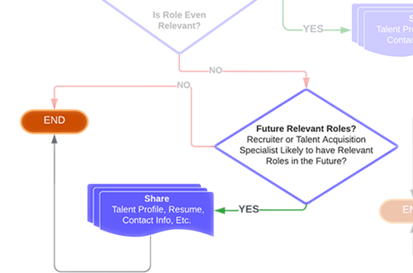 Future Relevant Roles are likely, because it was determined that the solicitation stakeholder was worthy with respect to sharing my talent profile, suggesting a follow-up, etc., and/or other, future, collaboration options. This is because the solicitation stakeholder met some criteria that suggests they are worth collaborating with in the future.
Future Relevant Roles are likely, because it was determined that the solicitation stakeholder was worthy with respect to sharing my talent profile, suggesting a follow-up, etc., and/or other, future, collaboration options. This is because the solicitation stakeholder met some criteria that suggests they are worth collaborating with in the future.
For example, the work offer solicitation they sent was awfully close to being a match, and/or they did some other thing that gave me reason to believe they are doing their best to make a connection on current and/or future roles.
Naturally, we are immediately sent forward to the “Share: Talent Profile” Workflow State.
Rate Confirmation ∴ Workflow State
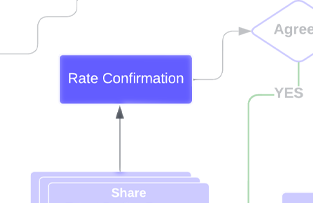 As soon as we complete the process of sharing my talent profile in its entirety (i.e., sharing talent profile, resume, contact information, and/or any information that can best position me in front of solicitation stakeholder clients) with the solicitation stakeholder (i.e., recruiter, talent acquisition specialist or direct employer that sent the solicitation), we may either begin talks with the rate confirmation their client is offering in the same exchange or it may be in the next communication(e.g., by email, phone, etc.).
As soon as we complete the process of sharing my talent profile in its entirety (i.e., sharing talent profile, resume, contact information, and/or any information that can best position me in front of solicitation stakeholder clients) with the solicitation stakeholder (i.e., recruiter, talent acquisition specialist or direct employer that sent the solicitation), we may either begin talks with the rate confirmation their client is offering in the same exchange or it may be in the next communication(e.g., by email, phone, etc.).
Moreover, once we have negotiated a rate, it is possible that the solicitation stakeholder will agree on the spot with the rate. Otherwise, we must have it double-checked with another party within the solicitation stakeholder’s company or client company.
In either case, we are immediately sent forward to the “Agree: Rate Confirmation: Decision Gate” Conditional Workflow State.
Agree: “Rate Confirmation” Decision Gate ∴ Workflow State
Once we reach the “Agree” Conditional Workflow State (also known as a decision gate) for the Rate Confirmation Workflow State, we come to a point where a Yes or No decision must be made before we can move forward, determining whether we agree on the suggested rate or salary for the role in question or not.
No
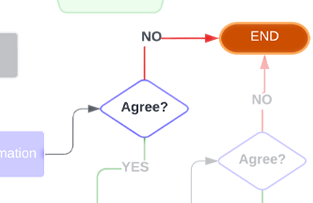 There could be several reasons why the solicitation stakeholder (i.e., recruiter, talent acquisition specialist and/or in rare cases, the employer directly) and I do not end up agreeing on the Rate Confirmation for a given role.
There could be several reasons why the solicitation stakeholder (i.e., recruiter, talent acquisition specialist and/or in rare cases, the employer directly) and I do not end up agreeing on the Rate Confirmation for a given role.
In fact, you would be surprised how something as simple as $1.00 more or less an hour makes the difference between whether a recruiter or talent acquisition specialist puts in the effort into pursuing their client as aggressively as they would if that said dollar didn’t matter to them. A lot of overseas firms are guilty of this tactic on Rate Confirmation, which is why I often try not to have the nickel and dime debate even remotely.
Even still, there are plenty of other reasons that factor into the rate confirmation negotiations going good or bad.
If we cannot Agree on Rate Confirmation, we are sent forward to the “End” Workflow State, effectively terminating this instance of the LGLP (Lead Generation Lifecycle Process).
Yes
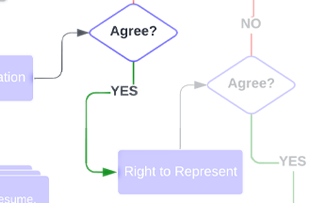 The Rate Confirmation negotiations turn favorable for both sides.
The Rate Confirmation negotiations turn favorable for both sides.
The Rate has met some criteria that suggests the solicitation stakeholder and I have Agreed on the Rate Confirmation.
We are immediately sent forward to the “Right to Represent” Workflow State.
Right to Represent ∴ Workflow State
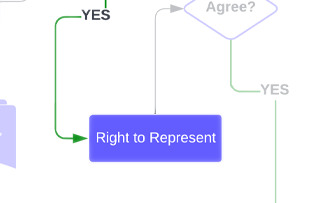 As soon as we are done with agreeing on the rate confirmation, the solicitation stakeholder (i.e., recruiter, talent acquisition specialist and/or in rare cases, the employer directly) will often initiate correspondence to their “right to represent.”
As soon as we are done with agreeing on the rate confirmation, the solicitation stakeholder (i.e., recruiter, talent acquisition specialist and/or in rare cases, the employer directly) will often initiate correspondence to their “right to represent.”
Now, as mentioned previously in this documentation, there are good and bad recruiters and talent acquisition specialists. Some try very hard, and others don’t. It is the nature of the business.
Still, some recruiters and talent acquisition specialists genuinely want to make the best relationship possible with their potential clients and candidates. Joe Francis, an expert Talent Acquisition Specialist from a recruiting firm, called, “New-cruit” is a good example of a person that cares.
Then, you have others that try to trick you into agreeing with certain things, such as lower rates and/or special right to represent privileges. Surprisingly, most recruiters and talent acquisition specialists try to get you with the “exclusive right to represent.” Watch out for this!
The “exclusive right to represent” means that you are giving that firm full, exclusive, rights to represent you with the client in question. In other words, no other recruiter or talent acquisition specialist is allowed to represent you to this particular client. Rarely will a recruiting firm have such representation power with their clients because the clients’ will often leave it open for other recruiting firms to compete. You/we should too.
Unless it is necessary, simply giving the “right to represent”, as opposed to “exclusive right to represent”, should be always your position, and the firm will still represent you. You must explicitly state your position on representation.
In either case, we are immediately sent forward to the “Agree: Right to Represent: Decision Gate” Conditional Workflow State.
Agree: “Right to Represent” Decision Gate ∴ Workflow State
To be clear, the “Right to Represent” Workflow State sent us, here, to the “Agree” Conditional Workflow State. Conditional Workflow States are often referred to as, “decision gates.”
In fact, we have now come to a point where a Yes or No decision must be made between me/you (i.e., the candidate) and the solicitation stakeholder (i.e., recruiter, talent acquisition specialist and/or, in rare cases, the employer, directly), before we can move forward.
This decision gate helps us determine whether we agree on the suggested Right to Represent for the role specified in the work offer solicitation or not.
No
 There could be a couple reasons why the solicitation stakeholder and I do NOT end up agreeing on the Right to Represent.
There could be a couple reasons why the solicitation stakeholder and I do NOT end up agreeing on the Right to Represent.
As mentioned above, the most important thing to catch is the “exclusive right to represent”. You should ensure they replace it with a simple, “right to represent.” Sure, a disagreement could come down to something else, but that tends to be the primary reason.
If we Disagree on the Right to Represent, we are sent forward to the “End” Workflow State, effectively terminating this instance of the LGLP (Lead Generation Lifecycle Process).
Yes
 The Right to Represent negotiations become favorable for both sides.
The Right to Represent negotiations become favorable for both sides.
The final agreement has met some criteria that suggests the solicitation stakeholder and I have Agreed on the Right to Represent.
We are immediately sent forward to the “⚠ Client Delay ⚠ Candidate Talent Review” Workflow State.
⚠ Client Delay ⚠ Rare Bottleneck Workflow States
OK, you got me! Well, that is, of course, if how you got me was notice a slight change in format with this section!
What do I mean? If we were following the normal, section-by-section, presentation format of this already-custom, blog post, with respects to the “follow-the-path-of-least-resistance” ordering of each Workflow State & definition, yes, technically, right about, here, is where the “⚠ Client Delay ⚠ Candidate Talent Review” Workflow State would be placed as the topic of discussion.
Sorry about that, and don’t worry… That workflow state, along with its definition, are next!
I chose this area of the blog post to interject real quick, because it is truly important that we discuss these quote on quote, “⚠️Client Delay⚠️” Rare Bottleneck Workflow States, here, and now, and why they differ from the rest of the other Workflow States, Sub Workflow States and Conditional Workflow States discussed previously.
Plus, the knowledge-share will be quick, totally worth the interjection & it’s all related anyway.
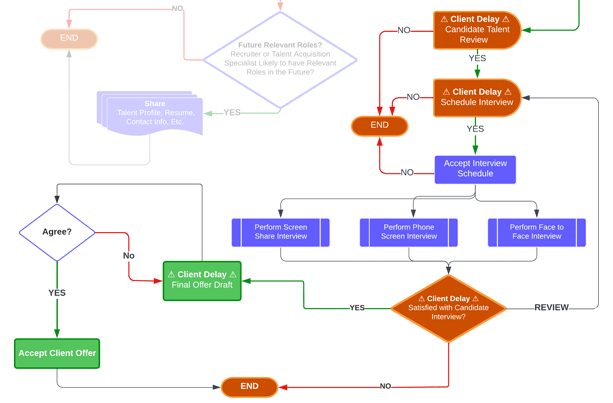
In short? As shown in the figure above, there at least four times these quote on quote, “⚠ Client Delay ⚠” Rare Bottleneck Workflow States require action from the solicitation stakeholder’s client (i.e., the recruiter’s or talent acquisition specialist’s client, and/or in rare cases, the employer directly) to avoid bottlenecks in this instance of the lifecycle.
Trust me when I say, “We cannot move forward without the solicitation stakeholder’s client’s input.”
Moreover, the rest of the workflow states remaining in this instance of the lifecycle require almost equal effort on behalf of me (the candidate), the solicitation stakeholder (the recruiting firm or talent acquisition specialist firm) and the client (the potential employer) to ensure all the remaining Workflow States conclude in a timely manner, and none of us become the bottleneck of the process.
⚠ Client Delay ⚠ Candidate Talent Review ∴ Workflow State
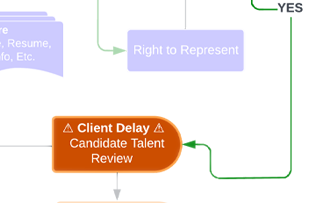 Once I/you (the candidate), the solicitation stakeholder (the recruiting firm or talent acquisition specialist firm) and the client (the potential employer) have worked out all the talent profile information, including any other occupation details common to a candidate talent profile, and we have all agreed upon the desired Rate Confirmation, and final Right to Represent requirements, the next big step is for all this information to be submitted to the client for further review.
Once I/you (the candidate), the solicitation stakeholder (the recruiting firm or talent acquisition specialist firm) and the client (the potential employer) have worked out all the talent profile information, including any other occupation details common to a candidate talent profile, and we have all agreed upon the desired Rate Confirmation, and final Right to Represent requirements, the next big step is for all this information to be submitted to the client for further review.
This action item, now owned by the client, can cause a measurable delay in the LGLP (Lead Generation Lifecycle Process).
In fact, there are so many reasons why - even at this stage - the solicitation stakeholder’s client could delay or pass altogether (explained later in one of the final Workflow States). You can’t get discouraged, either. You must continue processing the Work Offer Solicitations.
Still, whether the solicitation stakeholder’s client responds or not, we must continue with the process or need to End it.
No
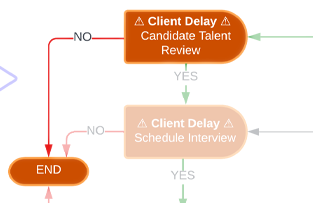 Realistically speaking, if the solicitation stakeholder initially declines a follow up and/or if the solicitation stakeholder’s client does not respond, in any way, after 2-3 weeks, we must end the lifecycle prematurely.
Realistically speaking, if the solicitation stakeholder initially declines a follow up and/or if the solicitation stakeholder’s client does not respond, in any way, after 2-3 weeks, we must end the lifecycle prematurely.
In either case, we are sent forward to the “End” Workflow State, effectively terminating this instance of the LGLP (Lead Generation Lifecycle Process).
Yes
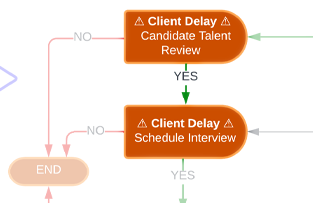 If the solicitation stakeholder’s client responds in a positive manner, 9 times out of 10, it is because the client wants to schedule an interview.
If the solicitation stakeholder’s client responds in a positive manner, 9 times out of 10, it is because the client wants to schedule an interview.
We are immediately sent forward to the “⚠ Client Delay ⚠ Schedule Interview” Workflow State.
⚠ Client Delay ⚠ Schedule Interview ∴ Workflow State
Once the solicitation stakeholder’s client (i.e., the client of the recruiting firm or talent acquisition specialist firm) reviews all Candidate Talent Profile information and reaches back out to me, the process now falls back in my hands and I become the latest bottleneck in the lifecycle process until I respond, so it is important a response is made as soon as possible.
No
 In rare cases, either something happens from the client’s end that stops the process completely, and/or something comes up on my end that prevents us from schedule an interview. This, again, is rare, and it could only happen if I found, for example, a bad review of the company at least minute, or I already accepted on offer somewhere else, or something like that.
In rare cases, either something happens from the client’s end that stops the process completely, and/or something comes up on my end that prevents us from schedule an interview. This, again, is rare, and it could only happen if I found, for example, a bad review of the company at least minute, or I already accepted on offer somewhere else, or something like that.
In these cases, we are sent forward to the “End” Workflow State, effectively terminating this instance of the LGLP (Lead Generation Lifecycle Process).
Yes
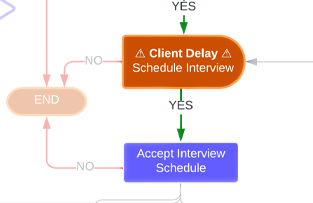 If the solicitation stakeholder’s client wants to schedule an interview with me, and it is important I get back to them as soon as possible.
If the solicitation stakeholder’s client wants to schedule an interview with me, and it is important I get back to them as soon as possible.
We are immediately sent forward to the “Accept Interview Schedule” Workflow State.
Accept Interview Schedule ∴ Workflow State
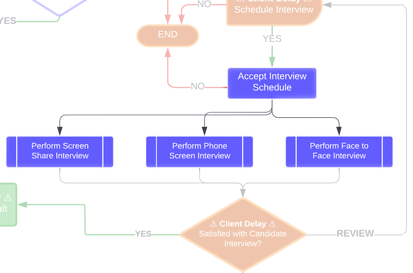 Once the interview process is back in our hands, I must accept whatever type of interview the solicitation stakeholder’s client prefers (i.e., the client of the recruiting firm or talent acquisition specialist firm). I can always decline, but that is not practical.
Once the interview process is back in our hands, I must accept whatever type of interview the solicitation stakeholder’s client prefers (i.e., the client of the recruiting firm or talent acquisition specialist firm). I can always decline, but that is not practical.
I am sure some companies have specialty interview processes that differ from the rest, but realistically speaking – at least in the Tech World – there are but a few types of interviews I see requested of me.
The most common interview types I encounter are as follows:
Perform Phone Screen Interview
Performing a phone screen interview consists of an interview with one or more individuals via phone. This often requires a follow up of one or more of the other interview types later; that is if the client is impressed with the initial phone screen. It is rare a phone screen is the only interview option asked of me, but I have nailed interviews in the past with a single phone call before.
Perform Face to Face Interview
Performing a Face to Face (F2F) interview involves an interview with one or more individuals on-site with the client. I prefer the F2F approach over all others for several reasons. However, one of the other types tend to be the initial choice by the client, first. Then, F2F.
Perform Screen Share Interview
Performing a screen share interview always involves an interview with one or more individuals with an additional screen sharing technology incorporated into the interview process; Microsoft Teams, WebEx, Zoom and/or Skype are potential platforms.
In any of these cases, once the interview has been completed, the process falls back into the hands of the solicitation stakeholder’s clients’, and we are immediately sent forward to the “⚠ Client Delay ⚠ Satisfied with Candidate Interview?” Workflow State.
⚠ Client Delay ⚠ “Satisfied with Candidate Interview?” ∴ Workflow State
Once the interview choice that was accepted is complete, there are some things that could happen, all of which could potentially bottleneck the lifecycle process. Yes, me, as well as the solicitation stakeholder (i.e., the recruiting firm or talent acquisition specialist firm) would love to wrap things up as soon as possible. At the same time, this is also the time when we need to allow the solicitation stakeholder’s client time to react.
Notice the “Yes”, “No” & “Review” decision gates in the Figure below.

No
The Client was NOT Satisfied with the Interview.
It is more common than not that a client or employer backs out of the deal altogether. You should expect it. Moreover, you cannot take it to heart if a potential employer passes on you as their designated candidate for this job in specific. Really, you just can’t beat yourself up.

So many tough decisions make up the final say on whether an employer or client accepts your proposal and/or candidacy. See the “You Can Do Everything Right & It Still Isn’t Enough. What, Then?” In Closing, section, below for more details if you find yourself in this situation one or more times.
At the end of the day, a “No” is still a “No”, especially if a client doesn’t respond at all after 2-3 weeks.
In either case, we are sent forward to the “End” Workflow State, effectively terminating this instance of the LGLP (Lead Generation Lifecycle Process).
Yes
The Client was Satisfied with the Interview! Congrats!
If the solicitation stakeholder’s client is satisfied with the interview, the next step would be for the client to generate a Final Offer.
We are immediately sent forward to the “⚠ Client Delay ⚠ Final Offer Draft” Workflow State, as shown in the Figure below.

Review
 As shown in the figure, it is possible that the solicitation stakeholder’s client would like yet another type of interview.
As shown in the figure, it is possible that the solicitation stakeholder’s client would like yet another type of interview.
The solicitation stakeholder’s client may need to double check requirements to ensure we didn’t miss anything in the first interview. They may also have remaining questions, or maybe there was an individual me/you (the candidate) must meet, of whom, wasn’t available for the original interview (e.g., Project Manager, CEO, etc.).
These are all normal things that occur, even though it may not be ideal with respects to all parties wanting to close the deal. Regardless, things like this often require another type of interview.
In the event another type of interview is requested by the solicitation stakeholder and/or their client, we are sent back to the “⚠ Client Delay ⚠ Schedule Interview” Workflow State.
⚠ Client Delay ⚠ Final Offer Draft ∴ Workflow State
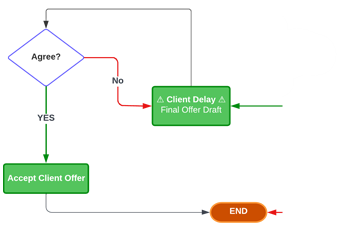 We can’t be going down a better path of my Lead Generation Lifecycle Process than the path we are on right now.
We can’t be going down a better path of my Lead Generation Lifecycle Process than the path we are on right now.
Once all possible interview types have been completed, and the solicitation stakeholder (i.e., the recruiting firm or talent acquisition specialist firm) and its client (your potential employer) is satisfied with all possible results and outcomes, one of the final Workflow States is waiting for the client to create and present a final offer letter. This is a client bottleneck.
A Final Offer Letter almost always outlines a basic “Congratulations!” introduction, the salary or rate agreed upon, the terms of the project, start dates, introduction and the welcoming into their business family, and just about any other positive bit of information that can be established before a formal orientation is completed within the workplace.
Still, I/you (the candidate), the solicitation stakeholder (the recruiting firm or talent acquisition specialist firm) and the client (the potential employer) must all still agree on the Final Offer Letter draft proposed
Assuming we all agree, we are immediately sent forward to the “Agree: “Final Offer” Decision Gate” Conditional Workflow State.
Agree: ⚠ Client Delay ⚠ “Final Offer Draft” Decision Gate ∴ Workflow State
I/you (the candidate), the solicitation stakeholder (the recruiting firm or talent acquisition specialist firm) and the client (the potential employer) must all agree or disagree on the Final Offer Draft currently proposed.
No
 Also shown in the Figure adjacent to you, it is possible, although rare, that the solicitation stakeholder’s client is NOT Satisfied with their final offer letter they drafted, and/or I/you did NOT Agree to the terms of the solicitation stakeholder’s client’s Final Offer Letter Draft for one reason or another.
Also shown in the Figure adjacent to you, it is possible, although rare, that the solicitation stakeholder’s client is NOT Satisfied with their final offer letter they drafted, and/or I/you did NOT Agree to the terms of the solicitation stakeholder’s client’s Final Offer Letter Draft for one reason or another.
There could be a rate or salary issue. Could be a start dates issue. Could be a typo.
Regardless, if I/you (the candidate), the solicitation stakeholder (the recruiting firm or talent acquisition specialist firm) and the client (the potential employer) do NOT Agree with the client’s Final Offer Draft, we are sent back to the “ ⚠Client Delay ⚠ Final Offer Draft” Workflow State, to ensure all possible revisions and/or iterations of the changes are handled correctly.
Yes
If the solicitation stakeholder’s client is Satisfied with the final offer letter they have drafted, and I/you have agreed to the terms of the solicitation stakeholder’s client final offer letter draft, we are immediately sent forward to the “Accept Final Offer” Workflow State, as shown in the Figure adjacent to you.
Accept Final Offer ∴ Workflow State
And here we are...I commend you if you have stuck in for the entire length of documentation, studying each, and every, Workflow State, in my custom LGLP (Lead Generation Lifecycle Process).
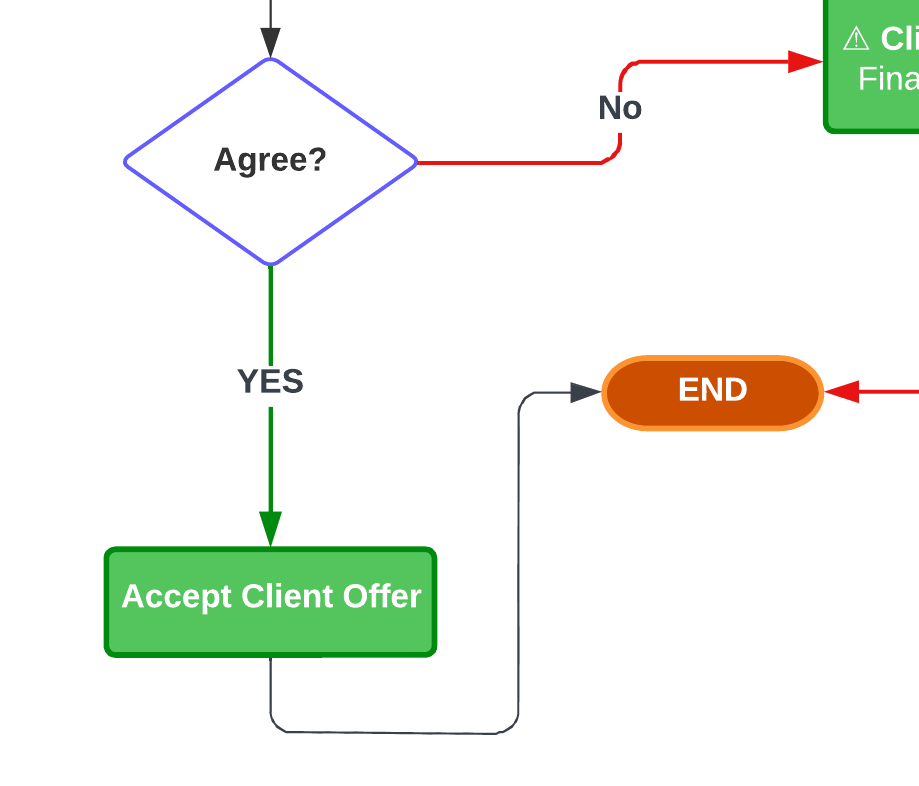 More importantly, I encourage anyone looking for a new job, client, etc., to use a version of this lifecycle to handle all the potential recruiters and/or talent acquisition specialist leads and situations you may face, using recruiting firms or talent acquisition specialists to get your next job opportunity!
More importantly, I encourage anyone looking for a new job, client, etc., to use a version of this lifecycle to handle all the potential recruiters and/or talent acquisition specialist leads and situations you may face, using recruiting firms or talent acquisition specialists to get your next job opportunity!
Most importantly? I strictly follow this LGLP (Lead Generation Lifecycle Process), and all its Workflow States, each, and every time, I start a new instance of this lifecycle, with each recruiting firm and/or talent acquisition specialist I work with, from start to end. You should too.
It is, here, now, where I/you (the candidate), the solicitation stakeholder (the recruiting firm or talent acquisition specialist firm) and the client (the potential employer) officially Agree on all requirements outlined in the Final Offer Draft Workflow State. I/you have officially accepted the client’s Final Offer Letter.
Finally, we are sent forward to the “End” Workflow State, effectively terminating this instance of the LGLP (Lead Generation Lifecycle Process), finishing it completely, as intended.
End: Lifecycle ∴ Workflow State
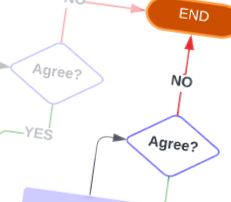 If we reach the “End” Workflow State, this concludes the current instance of the LGLP (Lead Generation Lifecycle Process). We immediately end/terminate this instance of the LGLP (Lead Generation Lifecycle Process).
If we reach the “End” Workflow State, this concludes the current instance of the LGLP (Lead Generation Lifecycle Process). We immediately end/terminate this instance of the LGLP (Lead Generation Lifecycle Process).
Moreover, there are, both, good reasons, and bad reasons for why this instance of the LGLP can, quote on quote, “End”.
One of the reasons this instance of the LGLP can be terminated is as follows:
- You successfully completed this instance of the lifecycle, in its entirety, as intended. Congratulations!
- A disagreement occurred when we reached the “Future Relevant Roles?” Workflow State, between me/you (the candidate) & the solicitation stakeholder (the recruiting firm or talent acquisition specialist firm). In most cases, it was determined the solicitation stakeholder put little-to-no-effort pairing me/you (the candidate) with their clients (the potential employers). In most cases, I wouldn’t even share my talent profile.
- An agreement occurred when we reached the “Future Relevant Roles?” Workflow State, between me/you (the candidate) & the solicitation stakeholder (the recruiting firm or talent acquisition specialist firm). In most cases, it was determined the solicitation stakeholder put the correct amount of effort into at least trying to find a relevant role now and/or suggested future roles.
- A disagreement occurred when we reached the “Rate Confirmation” Workflow State, between me (the candidate), the solicitation stakeholder (the recruiting firm or talent acquisition specialist firm) and/or the client (the potential employer).
- A disagreement occurred when we reached the “Right to Represent” Workflow State, between me (the candidate), the solicitation stakeholder (the recruiting firm or talent acquisition specialist firm) and/or the client (the potential employer).
- A disagreement occurred when we reached one of the “⚠ Client Delay ⚠” Workflow State, between me (the candidate), the solicitation stakeholder (the recruiting firm or talent acquisition specialist firm) and/or the client (the potential employer).
In any of these cases, again, this concludes the current instance of the LGLP (Lead Generation Lifecycle Process), so we immediately end/terminate this instance of the LGLP (Lead Generation Lifecycle Process).
In Closing
When hunting for the next job opportunity, I feel rolling up your sleeves and doing good, old-fashion, elbow work is what is required to truly get the job done; no pun intended.
Remember, You MUST Process the Leads: Relevant or Not
In the case of work offer solicitations in specific, it is an almost countless number of emails, DMs, Public & Private Social Media messages, phone calls, the works, each, and every, day.
Yes, my state-of-the-art, full body responsive designed, mobile-web application, universally constructed for smart phones, tablets, and desktop computers, absolutely and positively, provides a noticeable reaction and attraction to the vary work I do.
Yes, it is great that I can post my profile to social media platforms and job boards. Even then, I spent years building a following on these platforms to get my latest occupation message out to those of whom show interest. It took a lot of work, but now comes my fruits of labor, and it’s great that I have been able to share a process such as this with the World, in hopes many people on the job market today can leverage a version of this lifecycle to handle the recruiter and talent acquisition specialist leads most effectively, in-which come in each, and every, day.
At the end of the day, it all means nothing if you do not follow-through with your entire lead base, and that is with the understanding that copious amounts of these leads will not be “the role” or the recruitment firm you want to work with as you hunt for “your calling”. There is a lot of fluff out there being sent in the form of work offer solicitations to people across the work force. Conversely, using a complex lifecycle to handle recruiter and talent acquisition specialist leads like I have outlined will aid in your effectiveness to land your next role.
Still, you can do everything right, and sometimes it just isn’t enough. That’s OK, though. See why, below.
You Can Do Everything Right & It Still Isn’t Enough. What, Then?
It is more common than not that a client or employer backs out of “the deal” altogether. You should expect it. Moreover, you cannot take it to heart if a potential employer passes on you as their designated candidate for the job. Really, you just can’t beat yourself up.
So many tough decisions make up the final say on whether an employer or client accepts your proposal and/or candidacy.
Sometimes, it has nothing to do with you. Sometimes, it has everything to do with you. You may have dropped the ball at some point in the interview. Even, then, though, that is the only thing you can do wrong. There is so much more in-which you have no control.
Sometimes, the client or employer could have hired in the order-in-which-they-received-candidates, and that quote on quote, “candidate”, of whom, received that call a day before you, landed the role before a decision was made by your client handler.
Sometimes, budgets fall through, especially if the reason for hiring is to fill a quick expansion based on a new customer or vendor contract requirement.
Sometimes you may have absolutely everything the client or employer needs from a personality perspective, a team player perspective, a technology requirements perspective, and with a portfolio to prove it, but they realize their new customer contract requires a very specific technology they overlooked, which just happens to be a technology you are a novice in as of late. It could be down to something that simple. The client may never even respond. What then? Then, make the process move forward to the “End” Workflow State, effectively terminating this instance of the LGLP (Lead Generation Lifecycle Process)... What if it isn’t the client at all?!
What if the recruitment firm or talent acquisition specialist you are using at the time bid on you too high, too low, or maybe was just too slow? What if said recruitment firm or talent acquisition specialist never had a client to begin with, and just wanted to get your full talent profile in their database/system?
The reality is, it all happens, and it all happens all the time. You must entertain everything and expect nothing.
Still, you must keep going! If you are truly doing all the right things, with all the right skills and techniques, targeting the correct employer, you will eventually land a role you deserve.
Updates Since Article Creation
One of the reasons this instance of the LGLP can be terminated is as follows:
- 06/29/2022:In the process of spell checking in real time. Will make updates to this section of the article on 6/29/2022.
- 08/03/2022:Manufactured new Blade navigation for each Workflow State (i.e., The blade includes, “Previous Workflow State”, “Next Workflow State”, “Expand Lifecycle” & “Top”).
- 08/13/2022:Created a massive about cotent for Workflow State definitions. Over 44, 11'x8' pages of content, equilvient to over 30, brand new, Workflow State blades you now see in this article, encompassing the description of each, and every, workflow states in our custom LGLP lifecyle process!
Feel free to like, share & comment!
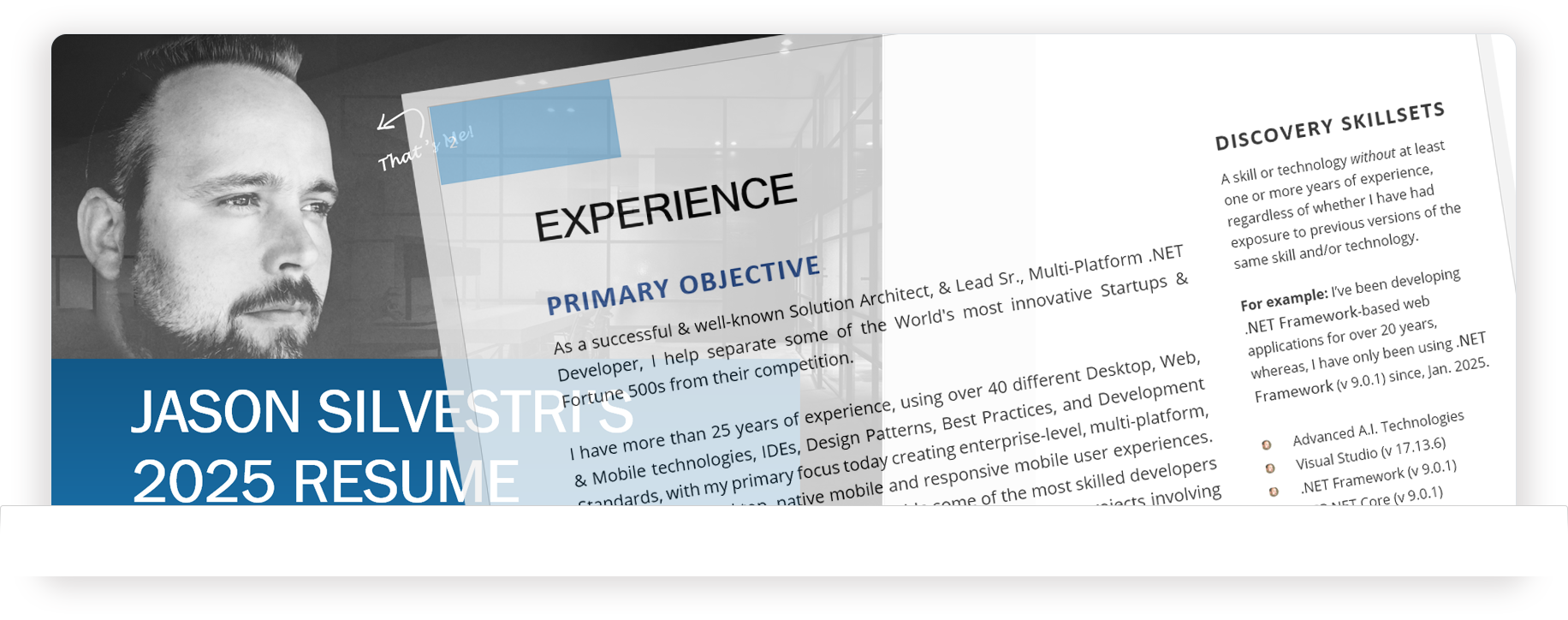 Choose from one of the following Resume Downloads in Word and/or PDF Format:
Choose from one of the following Resume Downloads in Word and/or PDF Format: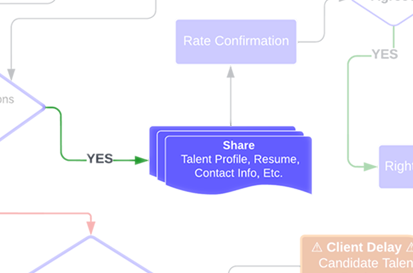 If the Work Offer Solicitation Review Workflow State produced a Work Offer Solicitation that is relevant, I follow up with the solicitation stakeholder (i.e., recruiter, talent acquisition specialist and/or in rare cases, the employer directly).
If the Work Offer Solicitation Review Workflow State produced a Work Offer Solicitation that is relevant, I follow up with the solicitation stakeholder (i.e., recruiter, talent acquisition specialist and/or in rare cases, the employer directly).